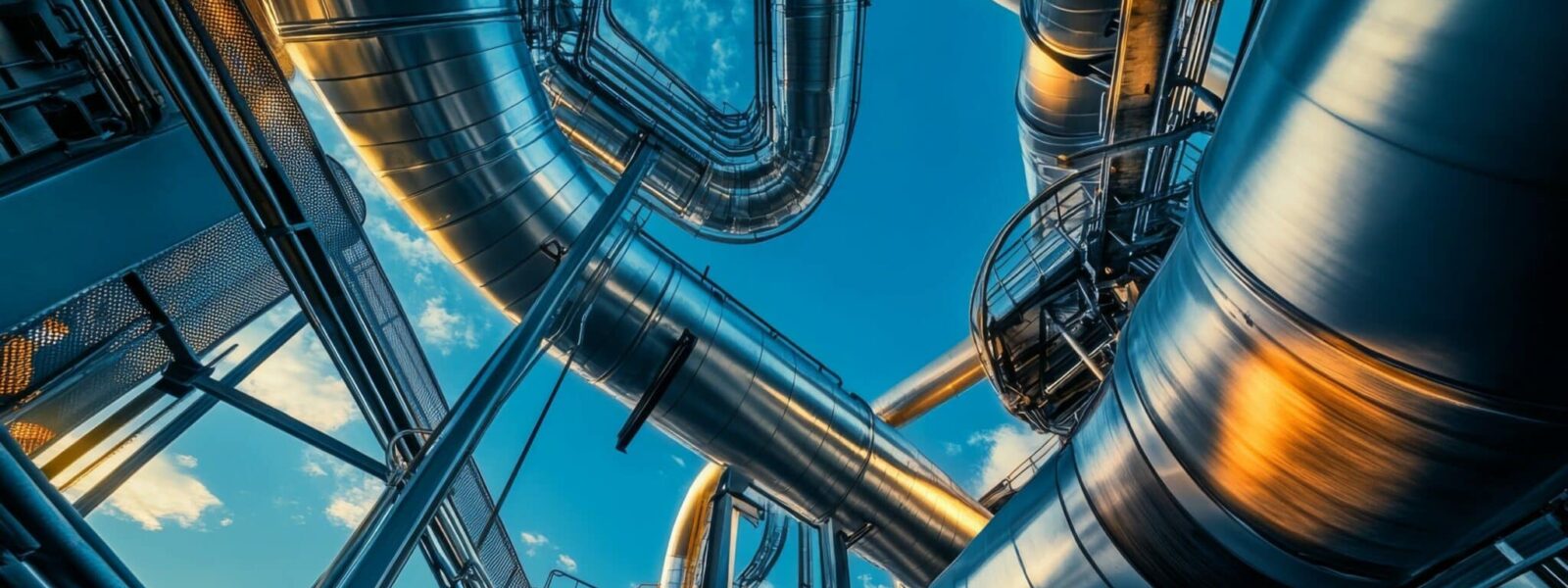Carbon capture faces its technological and economic limits
- To achieve the target of capturing 450 million tonnes of CO2 by 2050, various decarbonisation strategies must be considered.
- A study by ADEME shows that France’s climate inaction will cost between 5 and 7 points of annual GDP by 2100, underlining the economic importance of decarbonisation.
- A sharp increase in the carbon penalty on the EU ETS is envisaged by 2035 for heavy investments, but the priority is to invest in CO2 capture.
- The IPCC and the IEA consider capture, transport, storage and utilisation technologies for CO2 to be crucial to achieve decarbonisation targets for 2050.
- This involves combining three decarbonisation levers: reduction of CO2 emissions, reduction of fossil fuels and direct carbon elimination.
The future contribution of CCS (Carbon Capture and Storage) and CCU (Carbon Capture and Utilisation) technology in decarbonisation has become almost indisputable. The question now being: what is the right strategy if we are to achieve the capture of 450 million tonnes of CO2 by 2050?
“The path for the deployment of CCS (storage) and CCU (utilisation) is not set in stone, but it is imperative that States adopt a long-term vision,” says Paula Coussy, project manager for CO2 Externalities, Markets and Carbon Certification at IFP Energies nouvelles (IFPEN1), emphasising the importance of Nationally Determined Contributions (NDCs). Key elements of a plausible scenario include:
- capture technologies must prioritise sectors without other alternatives for reducing CO2 emissions;
- the first CCS and CCU value chains must be in place by 2030 at the industrial sites covered by the carbon market (EU ETS2), which are the cement, chemical, steel and aluminium industries;
- in line with the phasing in France, the cumulative capture target of 4 to 8 Mt CO2/year should be reached by 2035 by the industrial port hubs of Le Havre, Dunkirk, Saint-Nazaire and the Rhône corridor.
The European strategy sets three milestones: storing 50 Mt/year of CO2 by 2030, capturing 280 Mt/year by 2040 (including 60 Mt/year by Direct Air Carbon Capture [DACC]), and 450 Mt/year (including 150 Mt/year by DACC) by 20503. Ambitious targets that are achievable according to the experts… under “certain conditions”, first and foremost of which is a carbon price (EU ETS) to support CCS and CCU investments.
Economic challenges to the deployment of CCS and CCU
“In the face of the European legislative and regulatory framework, we have tools,” says Paula Coussy, pointing out that from 2026, carbon quotas should gradually disappear in favour of the Carbon Border Adjustment Mechanism (CBAM). These tools are those required to comply with European Commission directives.
“In the run-up to its deployment, the market will be driven by regulation,” says Raphaël Huyghe, CO2 Capture and Storage programme manager at IFPEN, emphasising the cost of inaction compared to the cost of action. For example, a study by ADEME (2023) estimates that climate inaction for France would cost between 5 and 7 points of annual GDP by 2100, or more than €180bn, resulting in a 13% reduction in median income by 2050, while the financing cost for the action is estimated at €66bn per year by 20304. On a global scale, a study published by Nature5, estimates that inaction will result in $38tn in damages by 2050, six times more than climate action.
Certainty in investment versus uncertainty in the penalty
Today, according to Paula Coussy, the risk is not technical but financial: “There is a gap between the current investment need and the as-yet unknown carbon penalty in 2050.” While commercial business models are being built along the CCS and CCU value chain, the aim is to “clarify the financial responsibility of CO2” through a framework for the certification of avoided or eliminated emissions.
In view of the cost of the CCS and CCU value chain, the carbon penalty on the EU ETS, currently €80/t CO2, is in fact currently insufficient incentive for heavy investment, and is expected to rise to €180/t CO2 in 2035. However, “the long-term vision must be to invest in capture” says Paula Coussy, noting that the current majority position of manufacturers is to prefer paying for CO2 emissions quotas. In their defence, the CCS value chain is new to them (130 to 230 €/t CO2, depending on the type of CCS value chain), hence the need for emitters to join forces to reduce costs and pursue innovation.
Technology as a lever
To achieve decarbonisation targets by 2050, the IPCC and the International Energy Agency believe that technologies for the capture, transport, storage and use of CO2 are essential. “It is a sequence of technological building blocks aimed at reducing emissions of CO2 (the main cause of climate change) that allow us to integrate its capture, transport and storage,” explains Raphaël Huyghe, emphasising that the two value chains, CCS and CCU, are complementary, but with different purposes.

However, these “building blocks” have been mastered technologically and can be combined: we know how to capture CO2 in industrial fumes (CO2 from fossil combustion), from biogenic sources (CO2 from biomass combustion) or directly in the atmosphere using Direct Air Carbon Capture technology (with a lower level of maturity, but which promises negative emissions), we know how to inject it into sealed geological formations for permanent and safe storage and, finally, we also know how to use it to manufacture products and materials.
While the circular carbon economy model using captured CO2 in e‑fuels and e‑products is particularly promising, with the development of CO2 in Sustainable Aviation Fuels (SAF), it is not at all on the scale of the storage that will represent millions of tonnes and must provide the fastest possible response to the climate emergency.
“The technology has been developed, is being implemented in stages, and the challenge is to roll it out on a large scale, on the one hand by reducing costs throughout the CCUS value chain, in particular capture, and on the other hand by stimulating investment through national and European strategies or policies and public funding combined with financial mechanisms (CCfd),” summarises Raphaël Huyghe. The technology must be based on its techno-economic viability to enable large-scale deployment in order to move from 50 Mt of CO2 captured in 2025 to 1 Gt in 2030 and 6 Gt of CO2 in 20506), and at the same time it will be necessary to accelerate the development of storage sites and coordinate all the players in the value chain.
“We have known how to capture CO2 for a century, but today we are changing our objective,” confirms Florent Guillou, CCS project manager, specifying that in Europe’s “net zero” in Europe by 2050 (EU Industrial Carbon Management Strategy, February 2024), it is a question of combining 3 decarbonisation levers: the reduction of CO2 emissions, the defossilisation of uses and the direct elimination of carbon. Among the four types of CO2 capture (pre-combustion, oxy-combustion, post-combustion and DACC), two have been tested and are now ready for industrialisation:
- DMXTM technology enables second-generation post-combustion CO2 capture. The industrial prototype, built and operated at the ArcelorMittal site in Dunkirk as part of the European 3D/DinamX project coordinated by IFPEN, has validated the performance of the process (11 European Union partners for 5 years [2019–2024] with a budget of €24m).
- CLC technology (chemical looping combustion of solid fossil/biomass charges [1 t/h]) is the result of 7 years of R&D (2017–2024) by 9 partners from the European Union and China with an overall budget of €22m7.
“These technologies are now ready for commercialisation among large emitters, and our future developments will consist of intensifying the processes for more compact and more accessible units, intended for small and medium-sized emitters,” says Florent Guillou.
After almost a century of experience in CO2 separation, the time has come to democratise technologies to help meet the challenge of combating climate change. While CCUS technology is not the oneglobal solution to decarbonisation, it can be a major player in it!
















